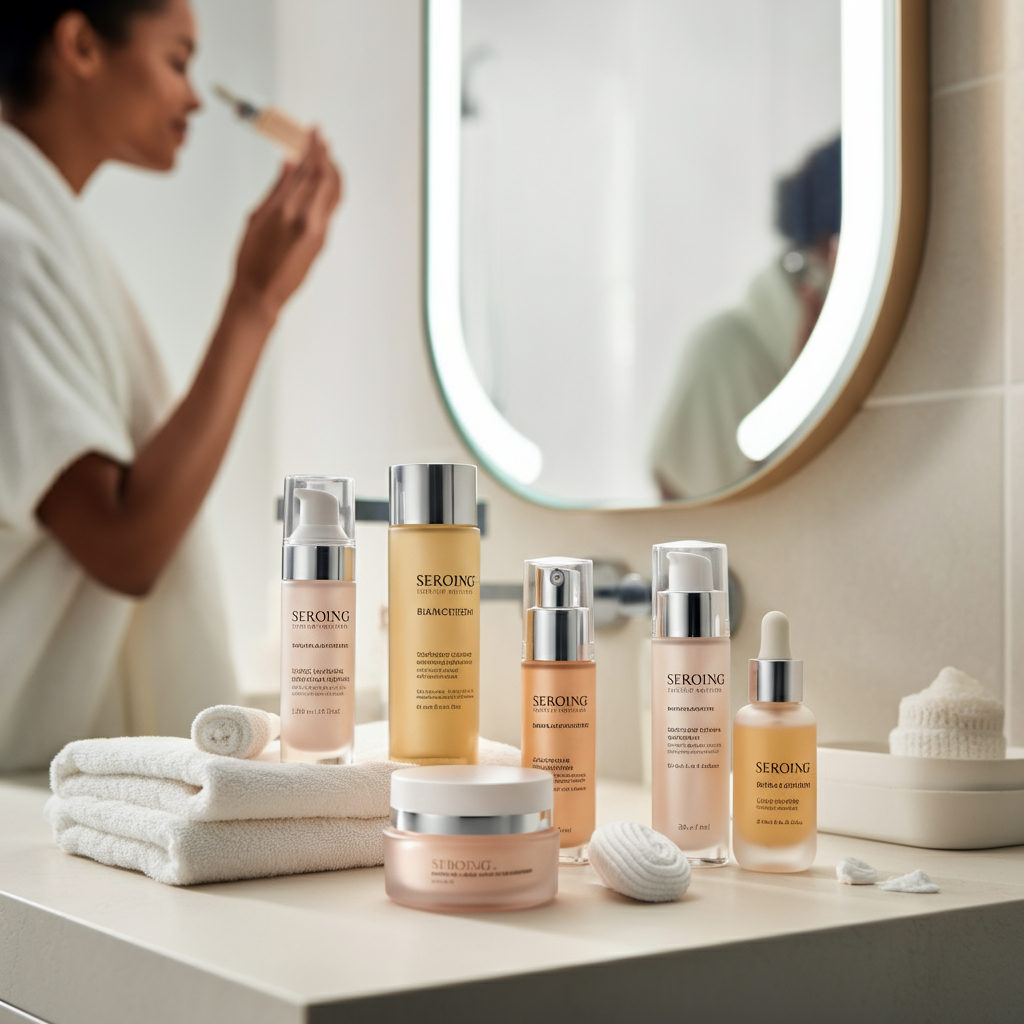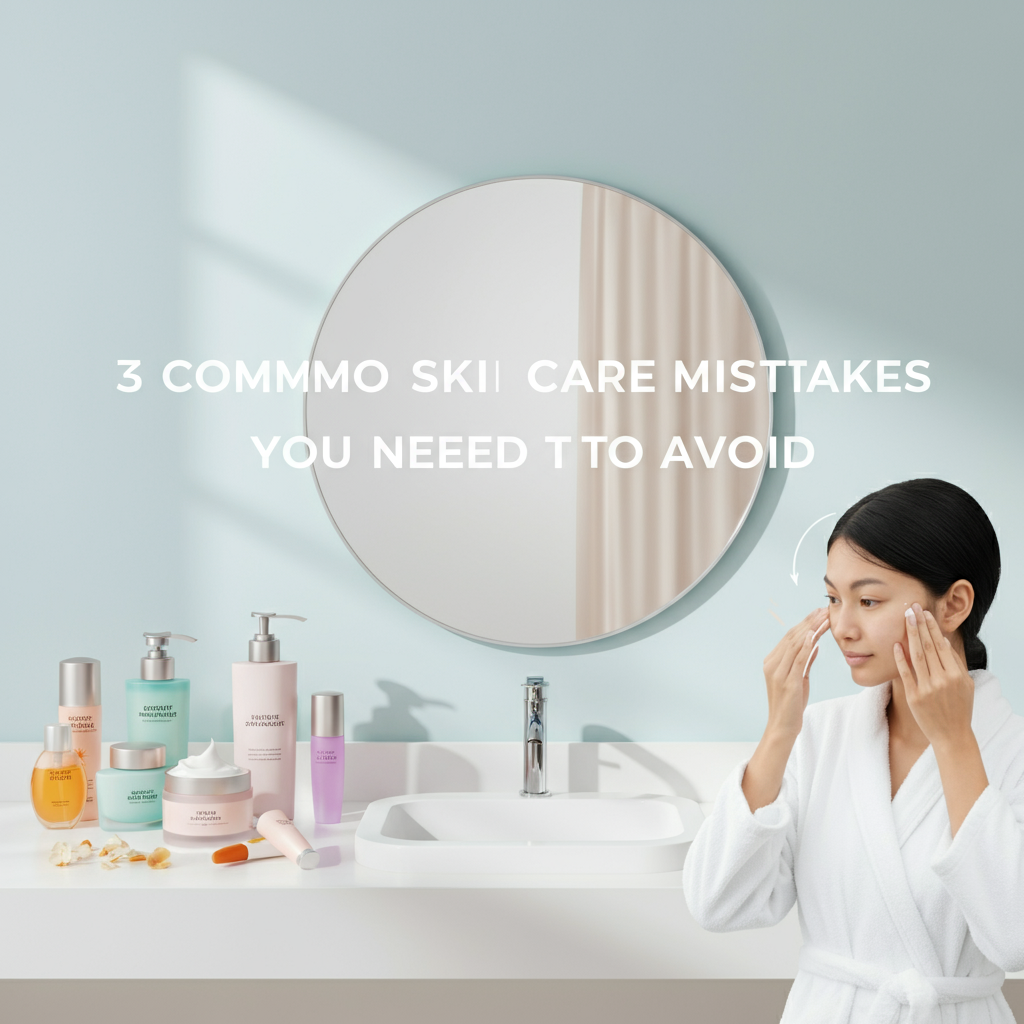Healthy, glowing skin isn’t just about the products you use or the trends you follow; it’s about understanding and addressing your skin’s needs. Yet, so many of us unknowingly sabotage our skin with mistakes that can lead to irritation, breakouts, or premature aging.
This guide will walk you through the three most common skincare mistakes and provide solutions to help you achieve a radiant complexion. Whether you’re a skincare enthusiast or new to the world of serums and cleansers, avoiding these pitfalls will set you up for success.
Mistake 1 Neglecting Your Skin Type
Why Knowing Your Skin Type Matters
Not all skin is created equal. The products that work wonders for your friend might wreak havoc on your skin. Knowing your skin type is the foundation of an effective skincare routine, as it determines the kind of products and treatments your skin thrives on.
How to Identify Your Skin Type
Here’s a quick guide to help you figure out your skin type:
- Oily Skin:
Shiny appearance with enlarged pores, especially in the T-zone.
- Dry Skin:
Feels tight and flaky, especially after cleansing.
- Combination Skin:
A mix of oily areas (like the T-zone) and dry patches on the cheeks.
- Sensitive Skin:
Easily irritated with redness and occasional itchiness.
Here’s a simple test you can do at home:
- Wash your face with a gentle cleanser and pat it dry.
- Leave your skin bare (no products!) for about an hour.
- Observe how your skin feels and looks. This will indicate your skin type.
Why Using the Right Products Is Crucial

Imagine applying a hydrating cream designed for dry skin to oily skin. It could clog your pores and lead to breakouts. Conversely, a mattifying gel on dry skin might leave it feeling parched and irritated. Using products tailored to your skin type ensures you’re addressing its specific needs without causing harm.
Pro Tip:
Consult a dermatologist or skincare specialist if you’re unsure of your skin type. They can guide you toward products that will work best for you.
Mistake 2 Over Exfoliating
The Purpose of Exfoliation
Exfoliation helps remove dead skin cells, leaving your face smoother and brighter. It can also help your products penetrate better, making your routine more effective. While exfoliation has undeniable benefits, more doesn’t always mean better.
The Dangers of Over Exfoliation
Over-exfoliating can disrupt your skin’s natural barrier. This can lead to:
- Irritation and redness.
- Increased sensitivity.
- Breakouts or worsening acne.
- A weakened barrier that leaves your skin prone to environmental damage.
How Often Should You Exfoliate?
Here’s a general guideline based on skin type:
- Oily/Combination Skin:
- times a week.
- Dry/Sensitive Skin:
- times a week.
- Normal Skin:
- imes a week.
Gentle Exfoliation Methods
Instead of harsh scrubs, opt for these gentler alternatives:
- Chemical Exfoliants: Products containing AHAs (glycolic or lactic acid) or BHAs (salicylic acid).
- Enzyme-Based Exfoliants: Made from natural enzymes like papaya or pineapple, perfect for sensitive skin.
Pro Tip:
Always follow up exfoliation with a good moisturizer to maintain hydration levels.
Mistake 3 Using Incompatible Products
Ingredient Interaction Explained
While it’s tempting to layer on all the serums in your collection, not all products play nicely together. Some combinations can cancel each other out, while others can severely irritate your skin.
Common Ingredient Combos to Avoid
Here are a few examples:
- Retinol and AHAs/BHAs:
These are both potent ingredients that shouldn’t be used together as they can cause irritation and stripping of the skin.
- Vitamin C and Retinol:
Vitamin C works best in acidic conditions, while retinol works in non-acidic environments. Using them together makes them less effective.
- Niacinamide and Vitamin C:
While newer formulations address this issue, older products could neutralize each other. Always check with the manufacturer.
Tips for Layering Products
To avoid irritation and maximize results:
- Start with the thinnest product (like a toner or serum) and work up to thicker creams.
- Use strong actives (e.g., retinol) separately—for instance, alternate nights instead of combining them.
- Use a simple routine and avoid overloading your skin with too many products at once.
Pro Tip:
When introducing new active ingredients, perform a patch test and introduce them gradually.
People Also Ask
How do I figure out my skin type?
Follow the wash-and-wait method:
Cleanse your face and observe how it feels after an hour. For oily skin, you’ll notice shine; dry skin will feel tight; combination skin shows a mix of both.
Can you exfoliate every day?
It’s not recommended. Over-exfoliating can damage your skin barrier. Most skin types benefit from exfoliating 1–3 times a week, depending on sensitivity.
What happens if I mix retinol with AHAs?
Using retinol and AHAs in tandem can lead to excessive peeling, redness, and a compromised skin barrier. To avoid this, use them on alternate days or consult a dermatologist.
Building Healthier Skin Habits
The first step to great skin is avoiding common mistakes. By understanding your skin type, practicing moderation with exfoliation, and using compatible products, you’re already ahead in your skincare game.
Want more personalized skincare advice? Take a closer look at your current routine and make adjustments as needed. Your future glowing skin will thank you for it!



